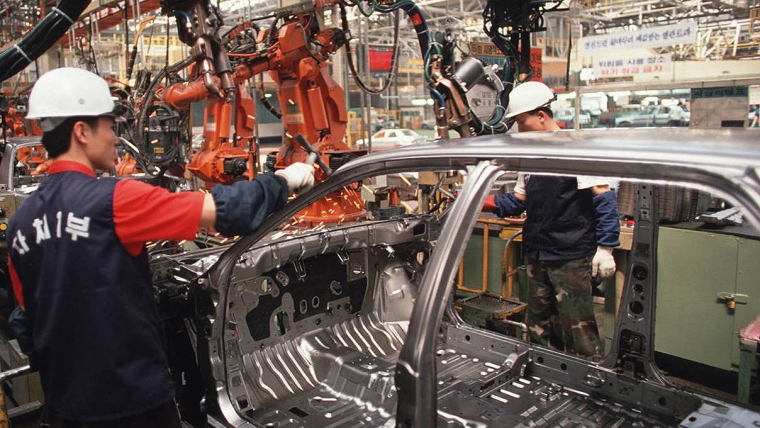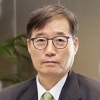
I recently gave a talk about industrial policy at the International Monetary Fund. That is a sentence you probably would not have read even a few years ago: historically, the IMF has been a sharp critic of industrial policy. But as many of its client countries embrace the concept, the Fund has recognised the need to clarify its position and update its guidance.
IMF economists have long worried that industrial policy can cause undue harm to a country’s fiscal position. But while some industrial-policy tools do demand significant fiscal resources, others do not. For example, entry control – when the government permits only a certain number of qualified firms to operate in strategic sectors – costs very little.
The logic behind entry control is simple: a few firms earning profits in an oligopolistic market is better than many firms reaping no profits in perfect competition, not least because profits can be re-invested in the selected firms. The policy also causes the rate of return to exceed interest rates – good for boosting private investment in manufacturing, which typically offers lower rates of return than services, with longer time horizons.
Entry control can be effective when an emerging economy with limited market size, resources, and technological capabilities seeks to enter new sectors and initiate new projects. But the government must choose firms wisely – accounting for factors like plans to import or license necessary technologies and to collaborate with other partners – and arrange financing. Entry control has been successfully implemented in China, Japan, and South Korea (where for a time only two or three firms were permitted to produce automobiles or provide wireless telephone services).
Local content requirements, which oblige manufacturers to source a certain share of the final value of a product domestically (the localisation rate), also have limited fiscal costs. Such requirements can support job growth, boost domestic value-added, and contribute to the upgrading of critical industries.
That was the case for China’s wind-turbine industry, which was dominated by Danish firms until China’s government introduced a set of supportive policies, including local content requirements, in the 2000s. Within a decade, domestic firms accounted for almost 90% of the Chinese wind-turbine market.
China also implemented local content requirements in its automotive sector, rewarding higher localisation rates with lower import tariffs. Imported parts and components of final goods with localisation rates of 40-60% were subject to a 75% tariff, compared to a 60% tariff for goods with 60-80% localisation rates.
But local content requirements violate World Trade Organisation rules, so China had to reverse them before its 2001 WTO accession. To help cushion the blow for local component manufacturers, which now faced greater competition from foreign firms, the government introduced new tariffs on imported parts and components. As a result, localisation rates have continued to increase among leading automotive manufacturers in China, reaching some 80% in the 2010s.
Malaysia also achieved some success with local content requirements – which helped to increase domestic firms’ share of the small-car market from 30% in 1992 to 60% in 1996 – before reversing them in 2004. Thailand tried something similar, but had to abolish the policy prematurely, at the WTO’s request, so its full potential was not reached.
But local content requirements appear to be making a comeback – most prominently, in America’s recently introduced industrial policy, the Inflation Reduction Act. In fact, China has filed a complaint at the WTO about the IRA over what it claims are discriminatory subsidies, which favour domestic producers. Given the WTO’s record of forcing countries to roll back local content requirements, especially those that are accompanied by subsidies, its handling of IRA-related disputes will be telling.
Import tariffs aimed at protecting nascent industries are a third industrial-policy tool worth mentioning. Whether one believes tariffs are effective depends significantly on which metric one considers. For example, one study found that tariffs reduced total-factor productivity in South Korean industries in 1963-83. But others, including my own, show that tariff protection did boost Korean firms’ export volumes and enable them to expand their market share over roughly the same period (1967-93).
This is appropriate. When an economy is in its earlier stages of development, productivity growth is not the primary objective. Far more important is increasing output and enabling firms to expand their market share, so that they can make the most of economies of scale, invest in technological upgrading, and create more jobs.
For example, it was thanks to high tariffs on imported cars (up to 82%) that Hyundai was able to capture 44% of the Korean market with its first own-brand car, the Pony, within a year of its introduction. Though the Pony was never able to compete in foreign markets – it cost just $1,850 in the United States, compared to $4,500 in South Korea – tariff protections effectively guaranteed domestic profits, enabling Hyundai to expand and invest in research and development.
Tariff policy need not be a blunt instrument. South Korea’s asymmetric approach – extremely high tariffs on consumer goods (to protect export industries) but considerably lower tariffs on capital goods – accounted for the economy’s specific needs at the time.
Moreover, government protection was linked to export performance, which meant that firms were still exposed to foreign competition. This combination of domestic-market protections and discipline from world markets was one of the most important features of Korean industrial policy in the 1980s and 1990s, not least because it ensured that late entrants still had a chance.
Industrial policy can help countries cope with growing economic and political uncertainty. But the details matter. Any IMF guidance on the issue must not only highlight fiscal prudence tools, but also emphasise the critical importance of striking the right balance between protection and market discipline.
Keun Lee, Vice Chair of the National Economic Advisory Council for the President of South Korea, is Distinguished Professor of Economics at Seoul National University and the author of China’s Technological Leapfrogging and Economic Catch-up: A Schumpeterian Perspective (Oxford University Press, 2022). Copyright: Project Syndicate, 2023, and published here with permission.

We welcome your comments below. If you are not already registered, please register to comment
Remember we welcome robust, respectful and insightful debate. We don't welcome abusive or defamatory comments and will de-register those repeatedly making such comments. Our current comment policy is here.